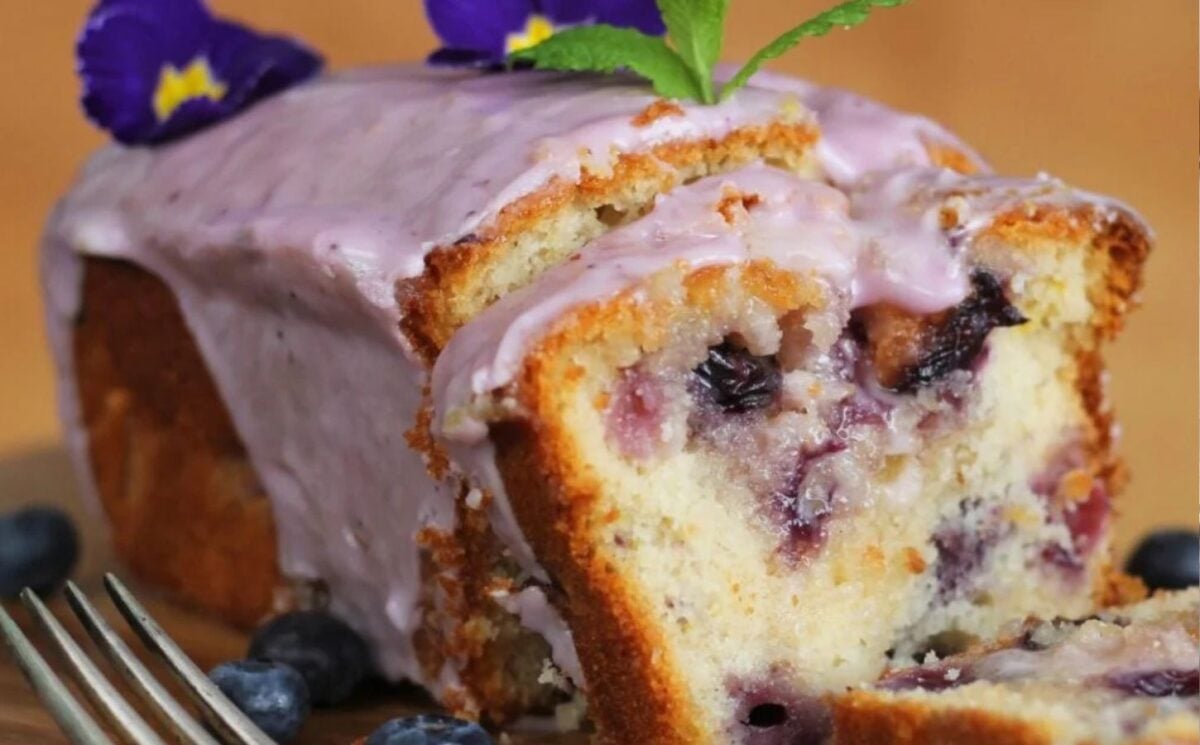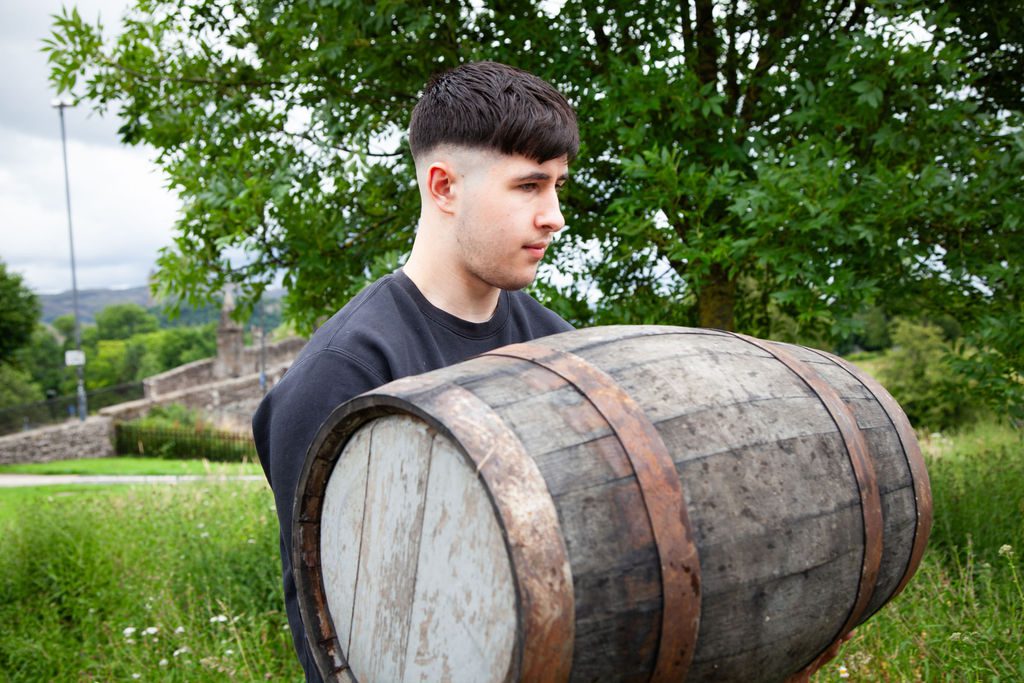Aluminum foil is one of the most popular tools in kitchens, and it's easy to see why. People use it in many ways — some of these uses are correct while others are, well ..
. a little more unconventional. Unfortunately, improper use of aluminum foil flirts with the line between "safe" and "catastrophic.

" This makes the common household item more controversial than many realize. Believe it or not, there is a right and a wrong way to use aluminum foil, even down to which side of it should be used for cooking. It's easy to forget that aluminum foil is made of metal.
Unlike plastic wrap and parchment paper, it follows its own set of rules regarding cooking, baking, and grilling. Even a simple misuse can cause food to taste off, or even become a health hazard in more severe instances. Here are the biggest mistakes everyone makes with foil, from accidentally melting it on a stovetop to thinking it's microwave-safe.
1. Buying the wrong kind of foil Contrary to popular belief, aluminum foil is not a one-size-fits-all kitchen tool. It might seem like whatever is on sale at the grocery store will do the job, but this is far from accurate.
The three main types of aluminum sheets found in most stores are heavy duty, non-stick, and everyday (regular) foil. Some brands, like Reynold's, offer more options like Grill Foil, Pitmaster's Choice, and pre-cut sheets, but these are specialized for outdoor use. Each main foil has its own purpose.
Heavy-duty aluminum is heftier in many ways, making it versatile for use in heavy cooking. It's intended for lining sheet pans, grill grates, and roasting pans. Everyday aluminum foil — AKA, the thin foil that's found in most stores — is used for light cooking like lining a casserole dish or baking pan, and covering pots or other cookware to retain heat.
This aluminum foil is not designed for the grill or high heat exposure, and is only meant to be an everyday cooking tool. Non-stick aluminum is often confused with regular foil, but the difference is that non-stick has two sides. This is the best choice for cooking messy or sticky food, grilling with marinades or tacky sauces, and lining baking sheets to prevent sticking.
2. Using the wrong side of non-stick foil A common misconception about aluminum foil is that since it has two sides, it's all non-stick. Aluminum foil has two sides due to the milling process during production.
This gives it a signature shiny side, and one dull side. Neither of these sides are non-stick on regular foil, although the texture of the foil itself may help food stick less. True non-stick foil has a coating on the non-stick side, whereas everyday foil does not have any special coating.
When it comes to non-stick foil, the biggest mistake people make is using the wrong side. Some foils even have the correct side labeled to avoid confusing and wasting a sheet. If they don't, always defer to using the dull side rather than the shiny side.
The dull side of non-stick foil is where coating is applied, and this is the side of the foil that should always be face-up. Food in direct contact with the shiny foil side may stick and can tear when you try to remove it. 3.
Mixing aluminum and acid Chemical reactions are relatively common with certain types of metals. At its core, aluminum is a metal that will react to certain things with extreme pH levels, like acids. When acid comes into contact with aluminum, it causes a reaction known as oxidation-reduction.
This corrosive reaction is irreversible, meaning once the two have come into contact, there's no way to prevent the damage from progressing. Aluminum foil is food-safe, but certain foods are not safe when using this type of metal. Citrus, which has a high acidity, can cause oxidation-reduction which may leach into the food and cause a metallic taste.
Other foods to avoid cooking in aluminum , like tomatoes and vinegars, have the potential to corrode aluminum foil. It should never be used to wrap anything with high acidity, nor should it be used to cook anything with high acidity levels. The longer acidic food is left to sit on aluminum foil, the more potent the reaction will be as aluminum salts are released.
White residue on your aluminum foil after removing any acidic food could indicate there was a reaction. 4. Storing leftovers in foil There are plenty of opinions when it comes to storing cooked food in aluminum foil.
It stands to reason that ziplock bags and Tupperware are a far better option, but that doesn't always stop people from resorting to a quick foil wrap. Whereas ziplock bags and Tupperware form airtight seals that lock in freshness, aluminum foil has no such thing. No one is arguing that it's not the most convenient option, but, along with greater risk of staleness, there are some significant health concerns that might make you rethink reaching for a foil packet.
Leftovers specifically need to be cooled in a way that prohibits bacteria growth. The Minnesota Department of Health recommends reducing the temperature of hot food from 135 degrees to 70 degrees Fahrenheit in no more than two hours. By six hours, food should be safely stored at 41 degrees Fahrenheit or below.
Wrapping food in aluminum foil inhibits this process, forcing the temperature to remain the same or even increase. Metal traps heat, which is counterproductive to cooling food. When this happens, it allows bacteria such as staphylococcus and Bacillus cereus to grow.
Acidity can further complicate things, adding corrosion into the mix of already potentially dangerous bacteria. 5. Cooking acidic foods on top of aluminum foil If you thought storing acidic foods in aluminum foil was bad, wait until you hear about cooking with them.
It's not uncommon to use aluminum foil on grill grates or to line baking dishes to save time on cooking , but it's always a good idea to exercise caution when adding ingredients. Chemical reactions speed up whenever heat is involved and this also applies to oxidation. It's a known fact that acid eats away at aluminum, causing corrosion that can leach into food.
This is compounded when food is cooked on top of aluminum foil, adding a secondary layer of danger. While many foods are safe to cook, it's best to avoid cooking any food with a high acidity level on aluminum foil . This includes, but is not limited to, fruits, tomatoes and tomato-based ingredients, vinegars which include marinades and brines, and even certain spices that contain higher acidity levels like paprika.
Not only will this cause a reaction, but aluminum salts will continue to be released throughout the cooking process. The end result will be food that tastes more like pennies than a freshly-grilled chicken. 6.
Exposing aluminum foil to high and direct heat It might come as a surprise but even aluminum has a melting point. For comparison, stainless steel — which is heat-safe — has a melting point of roughly 2,790 degrees Fahrenheit at its highest temperature. In stark contrast, aluminum, which is a far less stable metal, has a melting point of 1,220 degrees Fahrenheit.
Therefore, stainless steel cookware and aluminum are not interchangeable. They're not even in the same range when it comes to heat-safe applications. The average oven rarely sees a temperature above 450 degrees Fahrenheit, but that's not to say that a grill can't exceed this temperature.
Even pizza ovens can hit a temperature target of 1,000 degrees Fahrenheit, which is pushing the limits of what aluminum foil can handle. Grills have direct heat and indirect heat and when the lids are closed, the interior can easily reach an unsafe temperature for aluminum. One of the biggest mistakes is not acknowledging that foil can melt in the right conditions, so you might want to reconsider using aluminum foil on your grill .
7. Lining the bottom of the oven with aluminum foil Many people line the bottom of their ovens to keep them clean. While this might seem like a great benefit, it's not one that's worth the safety risk.
Ovens are designed with vents at the bottom to encourage air flow and maintain even heating. When these vents are covered, heat is trapped beneath the aluminum layer and does not circulate through the oven evenly. This is also true of warmer draws, the efficacy and safety of which can be hindered by putting an additional layer of aluminum at the bottom.
Aluminum foil can be a fire hazard if it's left in an oven long-term. The metal sheet can melt if it's exposed to direct heat, as is the case with gas stoves. According to GE Appliances, the only place aluminum foil should ever be placed in the oven is on the lower oven rack, directly beneath the food.
Aluminum foil should never span from wall to wall in an oven, nor should it cover any heating coils. 8. Foil-wrapping burners or stovetops A common mistake is covering the burners or stovetop with aluminum foil, when it's not intended for that purpose.
This is often done to keep the burners of gas or electric stoves clean, reducing the need to clean up a mess after cooking. However, this comes with its own risks. We already know the melting temperature of aluminum is 1,220 degrees Fahrenheit, and when it's introduced to direct heat — such as a burner — this increases the risk of melting.
Foil left on gas or electric burners may cause the aluminum to break down, which fuses it to the metal stovetop. Not only is this nearly impossible to remove, but the chemical reaction also causes metal particles to become airborne. According to the New Jersey Department of Health , this can cause respiratory irritation, skin irritation and burns, and, in severe cases, metal fume fever.
If aluminum melts to a glass top stove, it can become permanently fused to the burner. 9. Baking cookies with aluminum Aluminum foil has a place in baking, but not where cookies are concerned.
The metal foil causes cookies to bake unevenly and, ironically, it's not because it's a bad heat conductor. In fact, it's quite the opposite — aluminum foil is too good of a heat conductor when it comes to baking cookies. Aluminum foil heats up quicker than the rest of the sheet, which means the cookies that are in direct contact are exposed to a higher temperature than the rest.
The result is a cookie that's cooked on the bottom, while the top is still semi-raw. Additionally, cookies that are touching aluminum foil are prone to burning on the bottom. Since the aluminum retains heat, it scorches the bottom of the cookies much faster, meaning that they brown faster than the top.
There's no way to balance this cooking time, and the result will always be cookies that are burnt on the bottom and underbaked through the middle and top layer. 10. Wrapping potatoes in foil A classic baked potato is something almost everyone is familiar with.
While many people opt to bake their potatoes in a layer of aluminum foil, this is one of the worst cooking methods for a couple of reasons. Wrapping a potato in a protective layer of metal like aluminum encourages moisture retention, which is one of the biggest mistakes to make with a baked potato . The aluminum locks in liquid without allowing it to escape, which causes it to steam rather than bake.
By not wrapping the potato, air flow is encouraged, which results in a crispier skin and a fluffy interior rather than a soggy one. The best option is to place the potato directly on the grill or oven rack. Another reason to skip the aluminum-wrapped potato is because it can harbor bacteria.
If a potato is stored in the same aluminum it was baked in, there's no way to seal the package closed. Therefore, it becomes a breeding ground for foodborne bacteria that was permitted to grow due to the heat trapped in the foil packet. If you do bake a potato in aluminum foil, it should always be removed and stored properly after cooking.
11. Putting aluminum foil in the microwave Metal and microwaves don't mix. While it's not safe to put any kind of metal in the oven, some either forget or don't realize that aluminum is just another form of metal that can cause a reaction when heated.
The currents surging through the microwave that heat up food can also interact with metal, which causes sparks. Since aluminum is not a smooth surface, it has edges and grooves that can cause electric charges to pile up and ignite. When sparks are released, it becomes a major fire hazard.
Some appliances, like convection microwaves, can handle aluminum foil. Most of the microwaves people have at home are not convection microwaves, and therefore are not metal or aluminum-safe. Whereas microwave-safe cooking vessels absorb heat from microwave currents, aluminum reflects them, rendering it useless when reheating food.
Therefore, not only is aluminum a poor choice for reheating, but it's also a massive safety risk. 12. Reusing aluminum foil Aluminum foil isn't always cheap, which is why many people often wash and reuse sheets.
While this might seem like a great way to budget, it's not safe or efficient for cooking. Sumita Ghosh, the marketing director for Reynolds Foil & Bakeware, told EatingWell that aluminum foil is best tossed after the first initial use — and for good reason. Even if the aluminum sheet looks clean to the naked eye, it's possible there are scratches or crinkles that you can't see.
These can harbor bacteria, which make it unsafe to continue using in future cooking. While aluminum foil is not meant to be reused, it is meant to be recycled. The aluminum sheet must be mostly clean and free of residue, you can roll it up into a ball and drop it off with your recyclables.
Many programs accept aluminum foil but this varies locally. If you're out of steel wool , used aluminum foil can also be used to clean your grill, which is a safer way to reuse it if you're looking to get more bang for your buck out of your foil..
Food

12 Mistakes Everyone Makes With Aluminum Foil

Sure, most of us know not to put aluminum foil in the microwave, but there are many other mistakes you can make with foil that you should know about.















